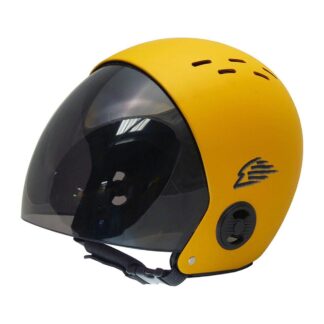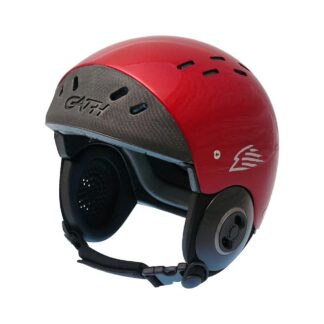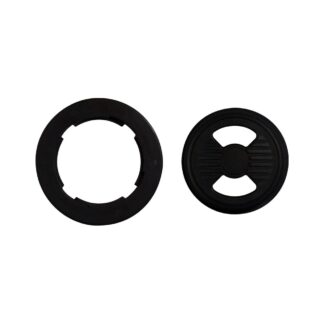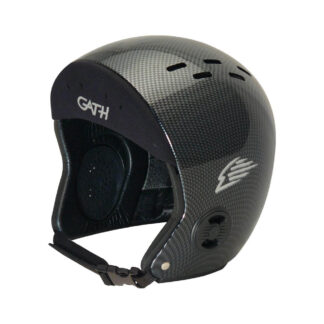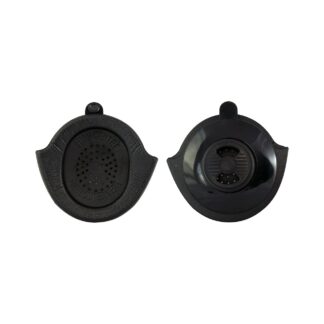Q: Which is the best surf helmet in your range?
If you’re a surfer or body boarder, or you’re doing a similar in-the-water sport or activity, you’ve got a number of Gath helmets to choose from.
The most popular helmets for these activities are the Gath Surf Convertible (weighing 280-305 gm) and the Gath Retractable Visor (RV) (weighing 460-510 gm). The Gath Surf Convertible – the newer surf helmet of the two models – has seen a huge growth in popularity as the model with the least drag.
When choosing a helmet for surfing and other similar in-the-water sports which involve pushing through waves or heavy turbulent water contact, a close fitting helmet is essential. Of our helmet range, the RV and Gath Surf Convertible are the best in this department.
While the RV is a really lightweight, close fitting helmet, the Gath Surf Convertible (GSC) is the lightest you can buy and benefits from Gath’s latest and unique fitting system, allowing you to create the perfect stable and comfortable fit. The GSC has detachable ear pockets so those who would rather surf with their ears uncovered can adjust the helmet to their preference. It also works with a range of peaks and visors for further customisation, allowing you to choose the perfect set up for the weather conditions. The SFC is really easy to adjust so there’s no fuss or time lost in creating the perfect set-up for the day.
So with all those benefits, why do some people still choose the Gath RV over the newer Gath Surf Convertible? It’s because of the full-face adjustable visor which offers a higher level of protection.
Q: Do I need a surf helmet?
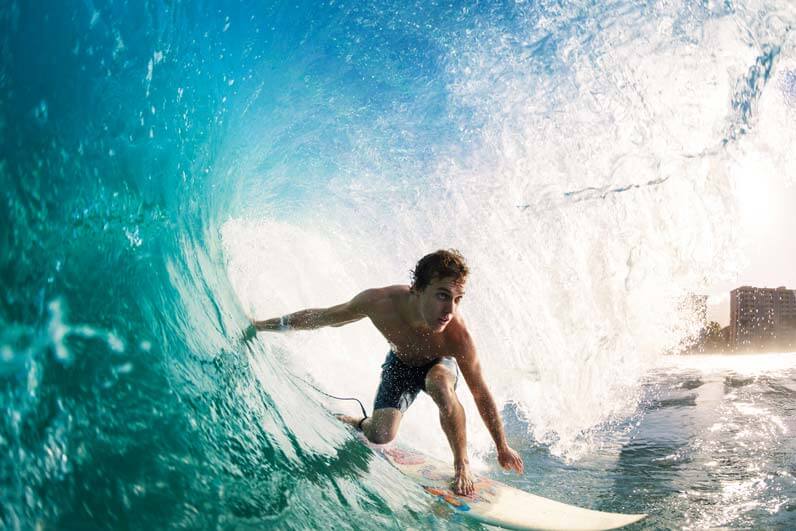
A few years ago, it was common to see pro surfers wear a surf helmet when competing in surf contents. But as time went on, fewer surfers chose to wear protective headgear – despite the very obvious risks of injury. In fact, one study carried out in Australia found that less than 2% of surfers regularly wore a helmet with a huge majority of respondents raising concerns that a helmet would affect their performance.
As you might expect, the most common injury amongst surfers is head trauma. A study by the Inertia which looked at surfing-related accidents in the southwest of France revealed that 51% of injuries sustained by surfers affected the surfer’s head. These included concussions, scalp or facial cuts, dental traumas, nasal fractures and perforated eardrums.
A head trauma might happen because of contact with a rock, the sea floor or a coral reef – but quite a lot of the time, they happen because of a collision with either the surfer’s own board, or another person’s surfboard. Pointed noses and sharp fins are the most common reason for lacerations – and scalp lacerations can cause profuse bleeding, leading to hemorrhage. Not a cheery thought.
In the event that a surfer suffers from a head injury, the biggest risk is actually drowning as a result of passing out in the water. It only takes a few seconds of unconsciousness for the risk to be very high. Head injury isn’t the only cause of drowning – this can also happen where a surfer ruptures their eardrum and experiences vertigo.
Given the huge risks, you might wonder why people put performance above safety. A simple reason is that many of the surf helmets on the market are uncomfortable and weighty. The Gath Surf Convertible offers a fantastic solution because it weighs so little – at just 270-305 grams (depending of course on the size you order), it’s quite literally the lightest helmet you can buy.
Q: What benefits does a surf helmet have to offer?
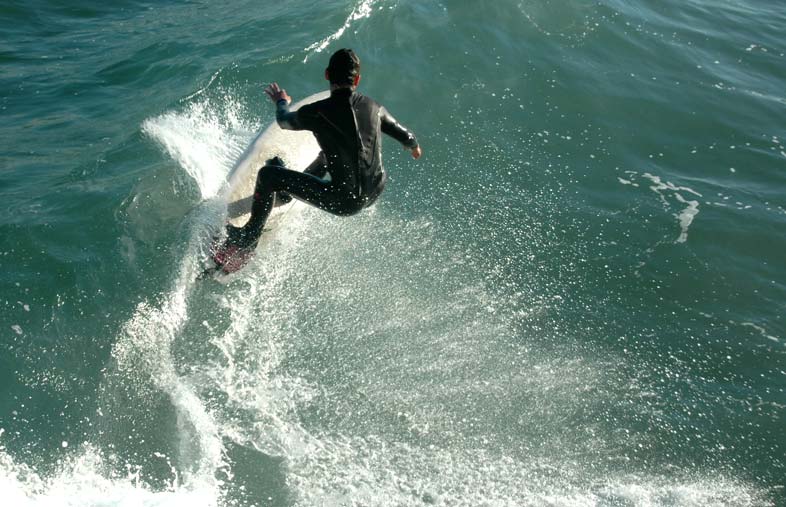
Gath helmets are both close fitting and lightweight, giving you great protection against superficial head injury and eardrum perforation. Whilst a surf helmet can’t offer complete protection from a high impact collision or entirely prevent neck injury, it can certainly will minimise the severity of injury and without doubt in some cases it is the difference between life and death.
Aside from protecting you from injury, surf helmets have a lot more to offer. Those that cover your ears offer protection from the irritation of cold water and wind both of which can give you surfer’s ear (or, technically, exostosis). This grim condition causes new lumps of bony growth which can constrict the ear canal. If the ear canal becomes blocked, there can be a build up of wax and water, leading to infection. Lovely!
Surf helmets also protect you from the sun – reducing the risk of skin cancer on the scalp. Those surf helmets that incorporate a visor offer protection for both the eyes and face from sun damage.
Finally, for those who love to record as they ride, surf helmets with a GoPro mount can take a GoPro camera.
Q: Are there any situations where a surf helmet is absolutely essential?
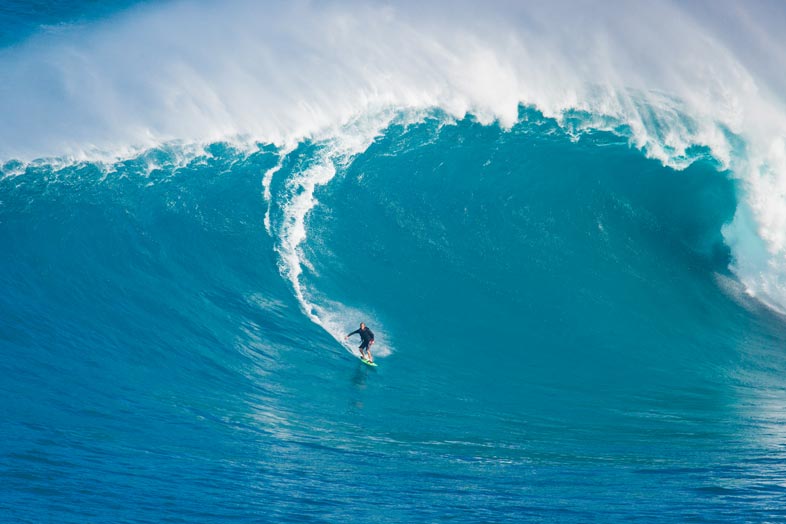
If you’ve decided to go against the best advice and go without a surf helmet, keep in mind that there are some situations where a surf helmet simply is not optional. They include:
- For children: Children’s heads are delicate and need extra protection. Ten-year-old surfer Ethan Ward suffered a brain surgery after a stray surfboard fractured his skull. Another ten-year-old Pascal Dattler’s skull was crushed into 8 pieces when a beginner lost control of his longboard. Surf helmets are not optional for kids.
- For shallow reeds: Where you’re surfing and the waves are breaking over sharp coral in fairly shallow water, a surf helmet can reduce the risk of both serious head injuries and lacerations. Pipeline is your best example – known for its huge waves which break in shallow water just above a sharp and cavernous reef. Most of the fatal accidents that occurred here were as a result of head injuries.
- In big waves: If your head meets the board – or the ocean floor – you can lose consciousness and drown. If you rupture your eardrum and experience vertigo/dizziness, you can drown. Wearing a surf helmet helps to prevent both collisions and eardrum rupture. It’s really a no-brainer in big waves and unsurprisingly big wave riders are open to wearing a helmet. Big Wave rider Al Mennie suggests you should wear a brightly coloured surf helmet as this can help people find you in a rescue situation
- In a crowd: Where there are too many people in the water, the risk of a collision goes up significantly. Even if you’re only surfing small waves, a surf helmet is a must. The wave height makes no difference – consider that most surfing accidents happen in small surf.

